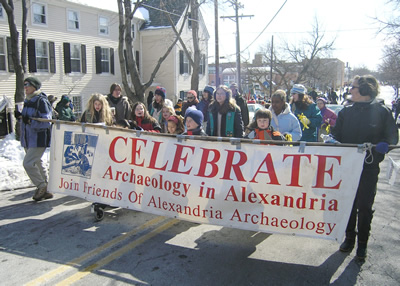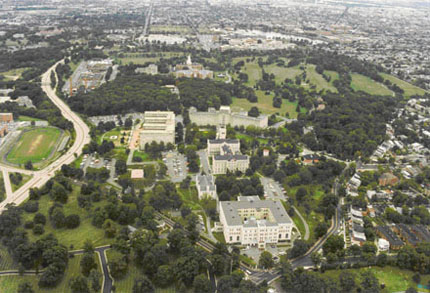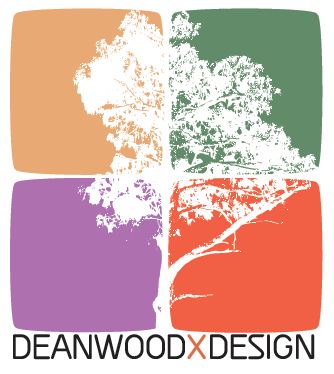
During the 1960s, Washington, DC and its surrounding communities experienced an urban renewal that saw a rebuilding of infrastructure and consequently required the destruction of a number of older buildings in the area. In Alexandria, an independent city a short distance from DC, the destruction of the old buildings uncovered an abundance of historical artifacts that shed light on the history of the area. Realizing that there was a plethora of previously undiscovered, culturally-important artifacts right beneath their feet, the city’s leadership created the Office of Historic Alexandria to try to cultivate and make sense of this new information.
Read more »
Terms:Community Building, Community Engagement, Creative Economy, Cultural Institutions, Heritage, Historic Preservation, IFC Best Practice, Museums, Public-Private Partnerships, Tourism, Washington, DC

The U.S. Armed Forces Retirement Home in Washington, D.C., commonly referred to as the ‘Soldiers’ Home,’ is one of the country’s oldest veterans’ retirement homes and certainly one of the most beautiful. Located on a 273-acre campus in Northwest D.C., the Home’s green pastures and tranquil lakes sit in stark contrast to the developed neighborhoods of the surrounding community. Since the home opened in 1851, the retirement community has been home to thousands of retired elderly and disabled veterans in the Washington area.
Read more »

By Diana Nash of the Pink Line Project on July 12, 2012
There is a buzzword circulating in the DC arts scene that I had not heard about until I returned to the city two months ago. While the concept of using the arts to spur economic and community development is not new, DC is getting attention for the success of its “Arts and Culture Temporiums” since the first one launched along the H Street NE corridor in 2010. Temporiums fall under the larger category of the Temporary Urbanism Initiative, a project undertaken by the DC Office of Planning. The goal behind the initiative, and more specifically, temporiums, is to activate vacant or underutilized spaces by using them to showcase the talent of local artists and other creative entrepreneurs, along with the retail potential that lies within emerging neighborhoods. Think of them as “Pop Ups” that stay around a little longer and have greater potential benefits for the communities where they take place. Jessica Scheuerman, of Partners for Livable Communities, explains that temporiums allow people to “take risks, explore partnerships, and to commit to something” without the burden of a long-term commitment. Temporiums connect creative people seeking affordable space in their neighborhoods with landlords who have the available space that they haven’t been able to lease. It is a smart and increasingly popular concept that lays the groundwork for longer-term collaboration between property owners and neighborhood entrepreneurs.
Building on the success of earlier temporiums, the Office of Planning is targeting four emerging creative neighborhoods to benefit from a $250,000 grant to the city from ArtPlace, an unprecedented new private-public organization. ArtPlace is part of a national “creative place-making” movement that aims to drive revitalization across the country with arts at the center of economic development. The launch of DeanwoodxDesign marks the next step in the OP/ArtPlace grant initiative.
Read more »
Terms:2012, Announcements, Arts & Culture, CBC Press/Media, Community Building, Creative Economy, Culture Builds Communities, Neighborhood Revitalization, Other Events, Public Art, Washington, DC
Walkability is synonymous with less traffic, a higher quality of life, and more vibrant streetscapes. A new Brookings Institution study—Walk this Way: The Economic Promise of Walkable Places in Metropolitan Washington, D.C., by Christopher B. Lienberger and Mariela Alfonzo—highlights the economics behind walkabaility, and why walkable areas are worth more than previously thought.
Read more »
 Here is a section of sidewalk in Boston made from brick pavers. It’s clear that the lack of uniform sizes and heights could pose challenges for the disabled or elderly pedestrian. Photo credit Seldom Scene Photography. Here is a section of sidewalk in Boston made from brick pavers. It’s clear that the lack of uniform sizes and heights could pose challenges for the disabled or elderly pedestrian. Photo credit Seldom Scene Photography.
Designers, planners, and members of the public have recently come into conflict over Boston’s historic use of molded brick in sidewalks and public spaces. Some think the use of bricks represents the face of Boston, while others condemn them as obstacles to the disabled and elderly. The different viewpoints amount to an ownership debate on the city’s public space.
The City’s Commission for Persons with Disabilities maintains that traditional, molded bricks are unable to provide the smooth surfaces (meaning no height variations greater than a quarter of an inch) that the Americans with Disabilities Act requires. However, other professionals (landscape architects, historical preservationists, and the brick industry) affirm that the material itself is not to blame, but rather improper installation and maintenance.
Read more »
Terms:2012, Aging, Arlington County, VA, Boston, MA, City Leaders Institute on Aging in Place, Design, Downtown Development, Fairfax, VA, Historic Preservation, Mobility, Washington, DC
 The D.C. Office of Planning (OP) has awarded a $75,000 “ArtPlace Arts and Culture Temporium” grant to Partners for Livable Communities (Partners) to develop and manage temporiums in underutilized spaces in the Deanwood neighborhood, one of the District’s earliest African American communities. The D.C. Office of Planning (OP) has awarded a $75,000 “ArtPlace Arts and Culture Temporium” grant to Partners for Livable Communities (Partners) to develop and manage temporiums in underutilized spaces in the Deanwood neighborhood, one of the District’s earliest African American communities.
Under this grant, Partners will develop and manage DeanwoodxDesign, a project that showcases the rich arts, cultural, historical, and green space assets of Deanwood and Ward 7 through a community-wide, intergenerational, and collaborative effort. This project engages artists and a diverse network of Deanwood institutions and stakeholders to cultivate community pride, showcase and create great art, and invigorate the creative economy.
Read more »
Terms:Announcements, Arts & Culture, CBC Best Practice, CBC Event, Community Building, Community Engagement, Creative Economy, Culture Builds Communities, Design, Multicultural, Neighborhood Revitalization, Placemaking, Public Art, Public-Private Partnerships, Urban, Washington, DC
Lifetime Achievement Award
Tersh Boasberg is honored for his revolutionary advocacy of historic preservation, land use, and environmental law, and as founder of Preservation Action, a national grassroots lobby. His active leadership in Washington, D.C. zoning battles has provided regional growth through the protection of historical beauty for our future.
Read more »
Entrepreneurial American Leadership Award
Robert Pohlman is honored for his foundational advocacy as the Executive Director of the Coalition for Nonprofit Housing and Economic Development. His influential support of the Housing Production Trust Fund and leadership has provided critical construction, rehabilitation, and acquisition of affordable housing units in Washington, D.C. during the past 10 years.
Read more »
Washington, DC
Households that replace just a few old incandescent light bulbs with LED bulbs, a product with more than three times the lifespan of their traditional counterparts, can reduce electric bills and put a dent in their carbon footprint. Imagine the impact of replacing 4,424,361 light bulbs. This is the number of streetlights in our nation’s ten largest metropolitan statistical areas. According to a study released in March of 2008, switching all streetlights in these major regions to an LED or a “smart streetlights” system could lead to a savings of 1,494,250,000 kilowatts (kWh) or a reduction of 1,161,716 metric tons of carbon dioxide (CO2). This report wasn’t produced by the EPA or a national LED manufacturer; in fact, this white paper was prepared by Bob Grow, then an American Chamber of Commerce Executives Ford Fellow in Regionalism and Sustainable Development for the Greater Washington Board of Trade.
Read more »
Mount Rainier, MD
A non-profit organization dedicated to the promotion, preservation, education, and development of Latin American art and culture.
Read more »
Terms:Arts & Culture, Community Building, Community Development, Cultural Institutions, Diversity, Education, Intergenerational, International, Multicultural, Washington, DC
Washington, D.C.
A committee made up of arts, business, and civic leaders dedicated to the cultural development of the Washington, D.C. community.
Read more »
Terms:Arts & Culture, CBC Best Practice, Community Development, Creative Economy, Cultural Institutions, Culture Builds Communities, Downtown Development, Economic Development, Neighborhood Revitalization, Urban, Washington, DC
Founders Award for Civic Leadership
A life-long commitment to improving livability through design.
Read more »
Terms:2009, Awards, Awards, Community Development, Design, Founders Award for Civic Leadership, Placemaking, Urban, Visioning & Planning, Washington, DC
Entrepreneurial American Leadership Award
A powerful couple who have worked to transform downtown D.C. into the lively urban center it is today.
Read more »
Terms:2009, Awards, Business, Community Development, Creative Economy, Design, Downtown Development, Entrepreneurial American Leadership Award, Neighborhood Revitalization, Placemaking, Public-Private Partnerships, Tourism, Transportation, Urban, Visioning & Planning, Washington, DC
Bridge Builders Award
An organization that uses dance to engage at-risk youth and teach valuable principles like work ethic, tenacity, responsibility and creative expression.
Read more »
City Leaders Institute

America is aging. Today roughly 37 million Americans age 65 and older represent slightly more than 12 percent of the country’s total population. By the year 2030 the number of Americans in this age group will nearly double, accounting for one-fifth of the population—almost all of these people will grow old in their own homes. Communities will face unprecedented challenges to providing the services and infrastructure that this population will demand. Yet, if communities are resourceful, innovative and prudent, these challenges will be eclipsed by the enormous share of social, political and human capital that will be made available by embracing the older adult population.
The MetLife Foundation has funded Partners for Livable Communities to implement the MetLife City Leaders Institute on Aging in Place. This timely initiative is inspired by the successful Mayors' Institute on City Design that has helped prepare more than 800 mayors to understand and put into practice the components of urban design over the past two decades. The City Leaders Institute has adapted a process to focus on the assets, needs and attributes of the over 65 population and consider what this means for local jurisdictions. This is accomplished by working with local leaders to establish a local Aging in Place goa, engaging a broad array of civic players around the goal, and raising awareness among everyone of the importance of embracing the growing older population.
Ten communities have been selected by Partners and MetLife Foundation to participate in the second year of the program. All are involved in a variety of innovative projects that have potential for being models for others.
Alexandria, Virginia
Alexandria will create a stakeholder group to roll out a replicable, area-by-area approach to creating viable, safe access for pedestrians, with particular emphasis on the older individual and the individual living with disabilities. This “Complete Streets” initiative goes well beyond transportation- it involves looking at aging in place on the whole, recognizing that access to places for seniors results in living healthier, longer, and with dignity.
Asheville, North Carolina
Asheville will engage the 50 and older population to determine what makes aging well in Asheville possible. As a result of the assessment, which will be distributed as a survey, Asheville will then create a model for aging in place that goes well beyond transportation, but certainly includes it.
Chicago, Illinois
The City of Chicago will create and implement the first phase of a volunteer drive effort to provide seniors, as well as people who are blind or visually impaired between the ages of 18-64, access to medical treatments such as dialysis and chemotherapy. As the program takes shape, it will expand to include other types of trips.
Kansas City, Kansas/Missouri
Kansas City will engage the senior and youth populations in an intergenerational recorded history program, whereby stories of older adults and histories of neighbourhoods will be recorded, preserved, and utilized for the good of the community. Anticipated outcomes include older adults achieving a sense of purpose, and being considered valued assets within the community at-large.
Louisville, Kentucky
Louisville will bring the city’s “Complete Streets” policy from concept to action. In the next 12 months the city will engage in a three-pronged effort of engaging, raising awareness, and celebrating successes. This will specifically involve: creating a Photo Voice initiative with older adults, where barriers to access will be identified and documented; identifying and executing at least two (one urban, one suburban) publically visible demonstration projects that respond to such barriers; and sharing these findings through a high-profile, community-wide celebration.
Memphis, Tennessee
Memphis will address the needs of older adults in the region whose homes are not currently suited for aging in place. Through the formation of a public-private partnership, the team will: identify viable funding and volunteer sources, develop a set of criteria for determining necessary home modifications, and create an implementation plan for a kickoff event in March 2014. The Memphis team will develop a centralized system that determines the home modification needs of older adults, directs them to these services, and provides funding for those who cannot afford to make such changes themselves.
Oklahoma City, Oklahoma
Oklahoma City will develop a process to insure that four senior centers set to be constructed in the city will be as inclusive, accessible, and encouraging of quality aging in place for the older individual, as possible. The process will involve asset mapping, utilizing universal design concepts, and incorporating lifelong learning, arts and culture, and health and wellness into the programmatic offerings of the centers.
Phoenix, Arizona
Phoenix will offer site-specific instruction to assist older adults in accessing reliable transportation options that enhance their capacity to age in place. Some critical steps along the way will include the creation and distribution of “origin and destination” surveys, investigating transit plans to restructure paratransit, researching and developing metrics for cost-benefit analysis of free travel for individuals aged 65 and older, as well as identifying the specific steps and processes required by each pilot program.
Salt Lake City, Utah
Salt Lake City will utilize the opportunities provided by the creation of the Utah Performing Arts Center and branding of the “Cultural Core” to insure that the spaces and associated programs enrich the lives of older adults. Salt Lake City will also assist arts groups in discovering new audiences by way of the senior population. Structural concepts of universal design and ADA compliance will be factored into the creation of the center, as will programmatic concepts that are inclusive of the diverse population of Salt Lake City.
San Diego, California
San Diego will engage their senior, disabled, and veteran populations in the process of developing a one-stop shop of seamless, intuitive, inviting technology for the older individual to access transportation and other community-wide information. The system, named “OSCAR” (One Stop Community Access Resource), will come to fruition once the following has taken place: needs assessment conducted; design and functionality of system articulated; engagement plan developed; prototype testing done; and data from assessments and testing synthesized.
Read more »
Terms:Aging, Aging in Place, Arizona, Community Building, Florida, Housing, Intergenerational, Life-Long Learning, Miami, FL, Mobility, Public-Private Partnerships, Regional Cooperation, San Diego, CA, Transportation, Visioning & Planning, Washington, DC
Founders Award for Civic Leadership
Senior Fellow of the World Wildlife Fund, for his continued dedication and passion in support of conservation of our country’s natural resources and in promoting access to clean water in the developing world.
Read more »
Terms:2008, Awards, Environment, Founders Award for Civic Leadership, Parks, Playgrounds & Gardens, Placemaking, Public-Private Partnerships, Visioning & Planning, Washington, DC
Bridge Builders Award
The National Children’s Museum and The Peterson Companies, Developer for National Harbor, for working together to create a stronger region through the development of a successful mixed-use destination for residents and tourists in Prince George’s County, and helping link National Harbor, a new riverfront project, to the nation’s capital.
Read more »
Bridge Builders Award
Raymond R. Christman, President, Federal Home Loan Bank of Atlanta and M. Craig Pascal, Vice President, Community Development Specialist, Washington, DC branch of BB&T of NC, for their understanding of the value of culture-based community development and their dedication towards creating opportunities for them to exist and thrive in the Washington, DC region through the successful EDGE Program which has benefited such organizations as The Dance Institute of Washington and Joe’s Community Arts Organization in Mt Rainier, Maryland.
Read more »
Bridge Builders Award (Prince George's County, MD)
Nick Francis, President, Gateway Community Development Corporation and The Honorable Jack B. Johnson, County Executive, Prince George’s County, Maryland for their development and creation of the Prince George’s Gateway Arts District, the largest, single public/private arts and community revitalization effort in the nation. Gateway is an innovator on how to use arts-based development projects as a catalyst for commercial revitalization by exploring ways to support the artists living and working in its community.
Read more »
Terms:2003, Arts & Culture, Awards, Bridge Builders Award, Economic Development, Neighborhood Revitalization, Prince George's County, MD, Public-Private Partnerships, Washington, DC
|
|